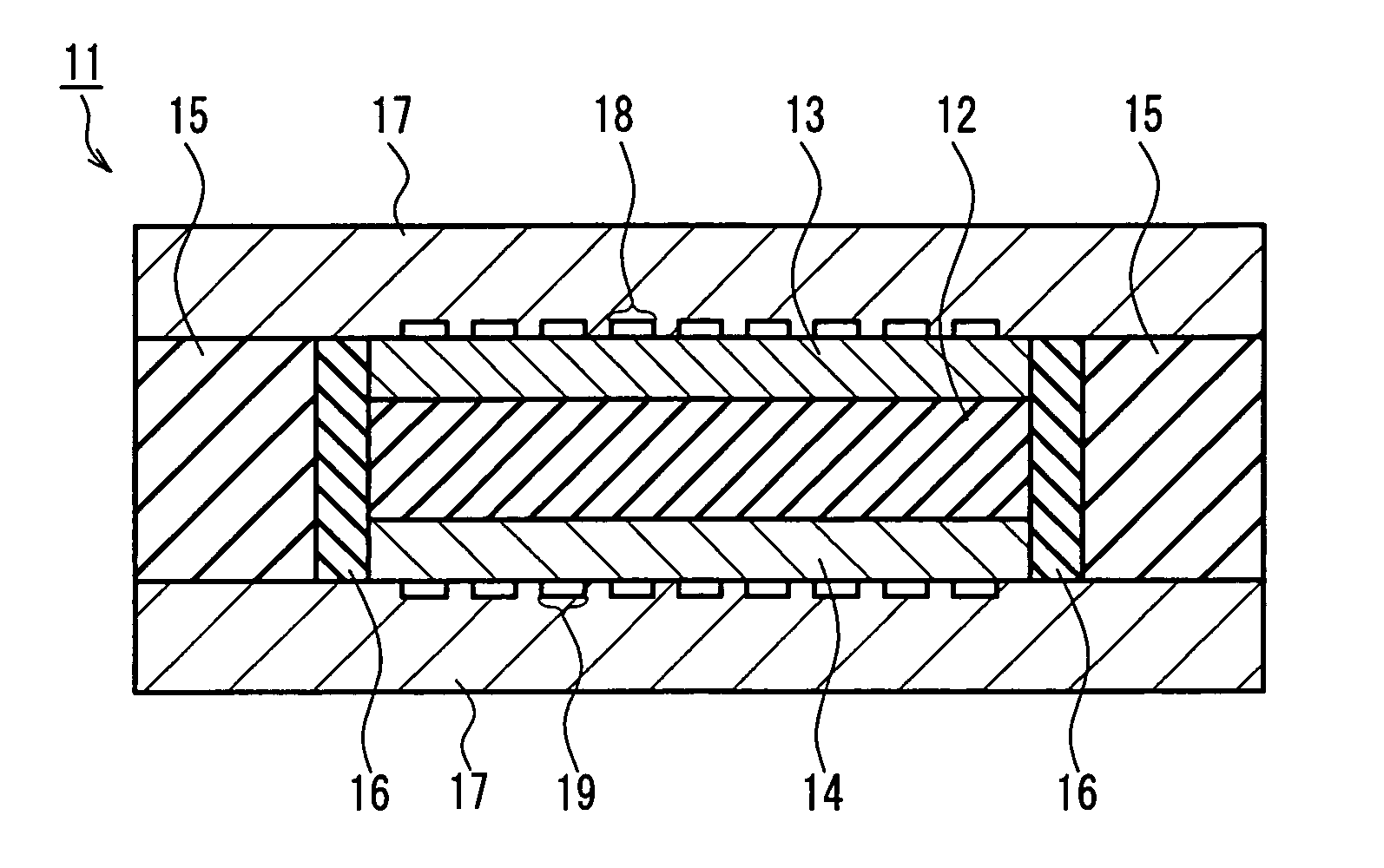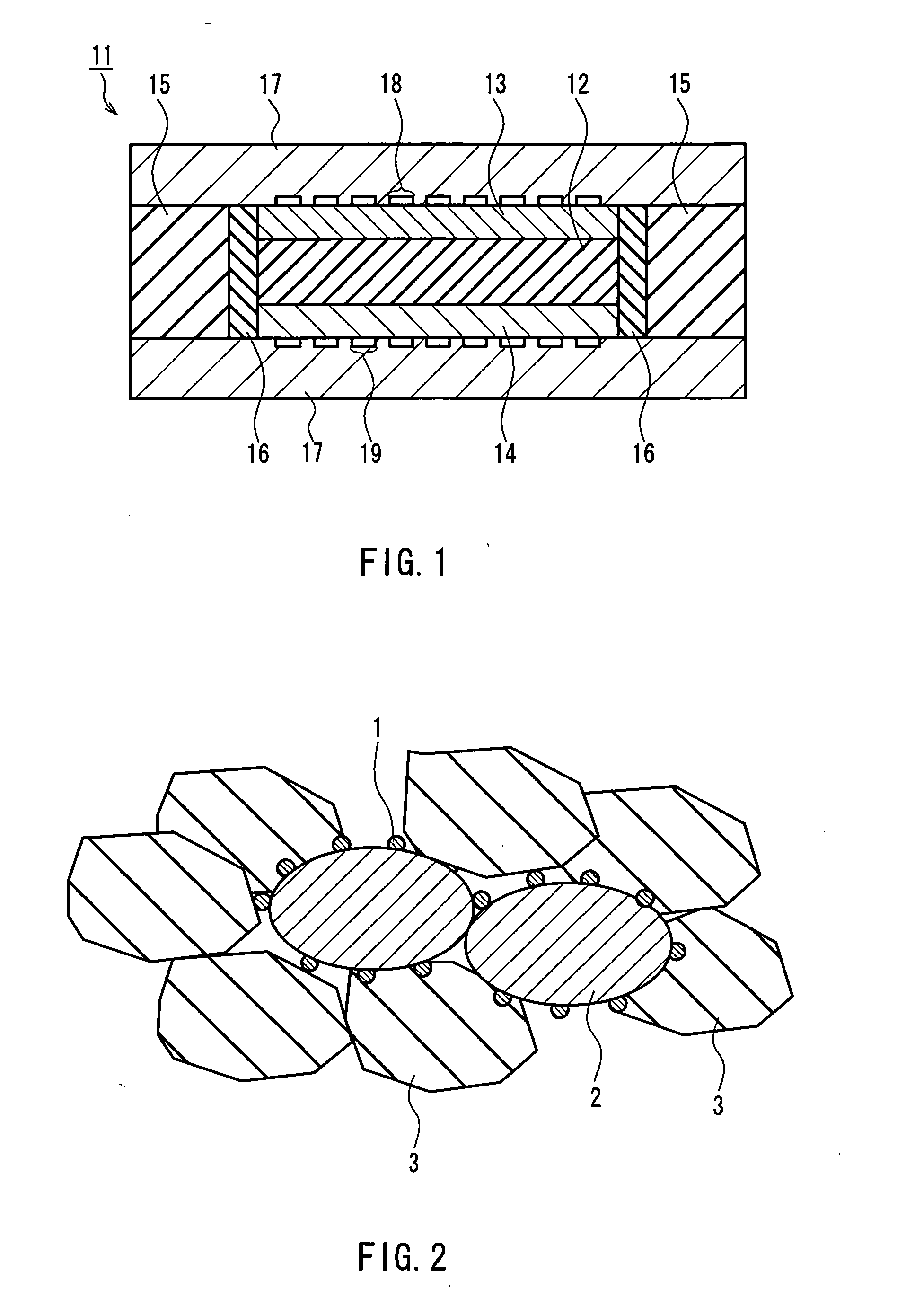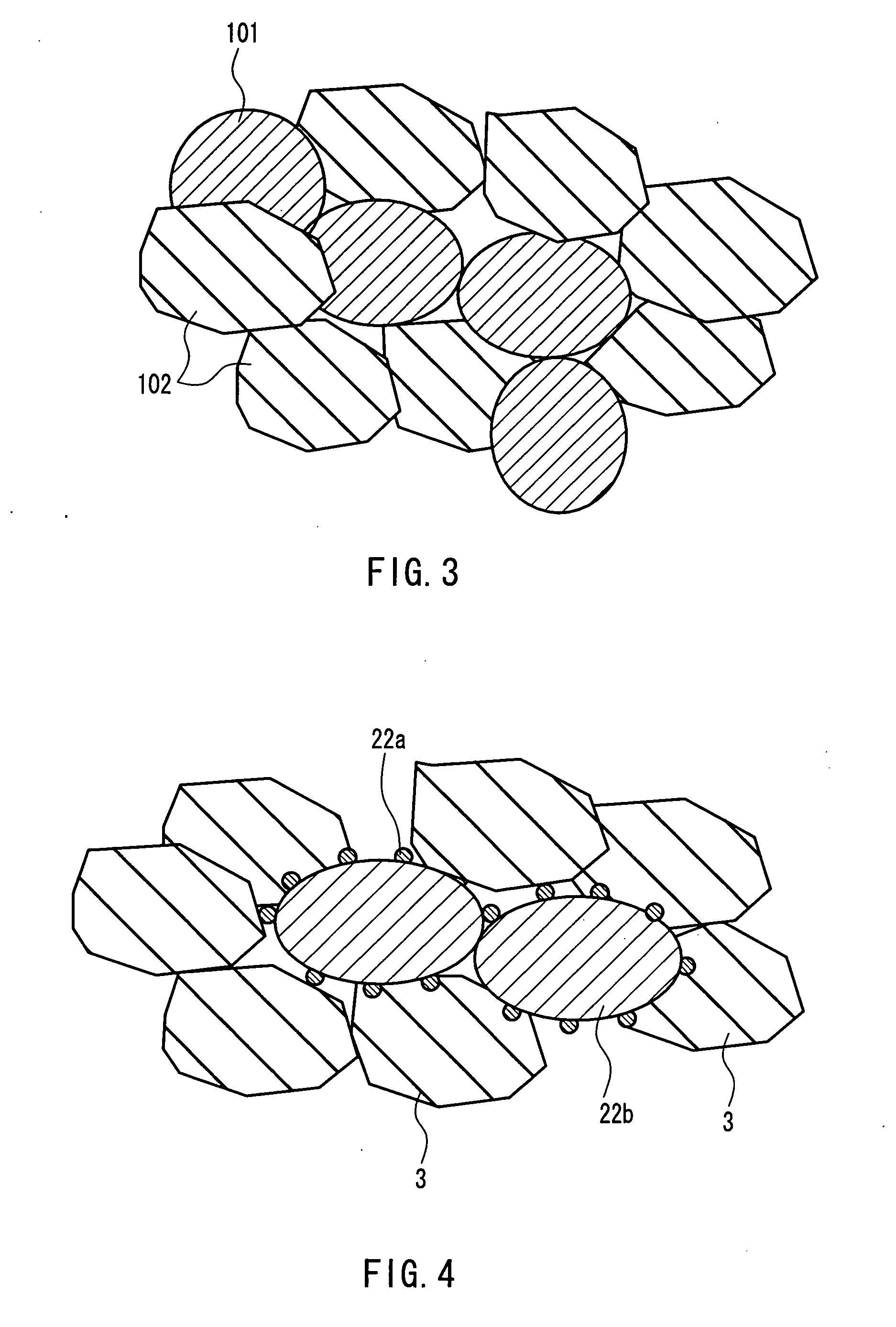Solid oxide fuel cell and method for producing same
a fuel cell and solid oxide technology, applied in the direction of fuel cell details, cell components, electrochemical generators, etc., can solve the problems of reducing the power density of the cell, affecting the output power of the cell, and affecting the production efficiency of the cell
- Summary
- Abstract
- Description
- Claims
- Application Information
AI Technical Summary
Benefits of technology
Problems solved by technology
Method used
Image
Examples
working examples
[0095] The present invention is explained in further detail below using the working examples. It should be noted that the present invention is not limited to the working examples shown below.
[0096] In the working examples, fuel cells were fabricated (sample 1 to sample 20) using the methods shown below and power generation characteristics (power generation temperature dependence) of each fuel cell were evaluated. First, a method for fabricating a sample is shown. It should be noted that sample 20 is a conventional fuel cell and is a comparative example.
Sample 1
[0097] First, a laminated body of a cathode and a first solid oxide was formed.
[0098] First, a paste containing LaMnO3 particles with an average particle diameter of 5 μm or less, Ce0.9Gd0.1O2 particles with an average particle diameter of 5 μm or less, and carbon powder with an average particle diameter of 10 μm (manufactured by Nippon Carbon Co., Ltd.) was made up by mixing the materials noted above, and further adding ...
PUM
| Property | Measurement | Unit |
|---|---|---|
| Temperature | aaaaa | aaaaa |
| Temperature | aaaaa | aaaaa |
| Temperature | aaaaa | aaaaa |
Abstract
Description
Claims
Application Information
 Login to View More
Login to View More - R&D
- Intellectual Property
- Life Sciences
- Materials
- Tech Scout
- Unparalleled Data Quality
- Higher Quality Content
- 60% Fewer Hallucinations
Browse by: Latest US Patents, China's latest patents, Technical Efficacy Thesaurus, Application Domain, Technology Topic, Popular Technical Reports.
© 2025 PatSnap. All rights reserved.Legal|Privacy policy|Modern Slavery Act Transparency Statement|Sitemap|About US| Contact US: help@patsnap.com



